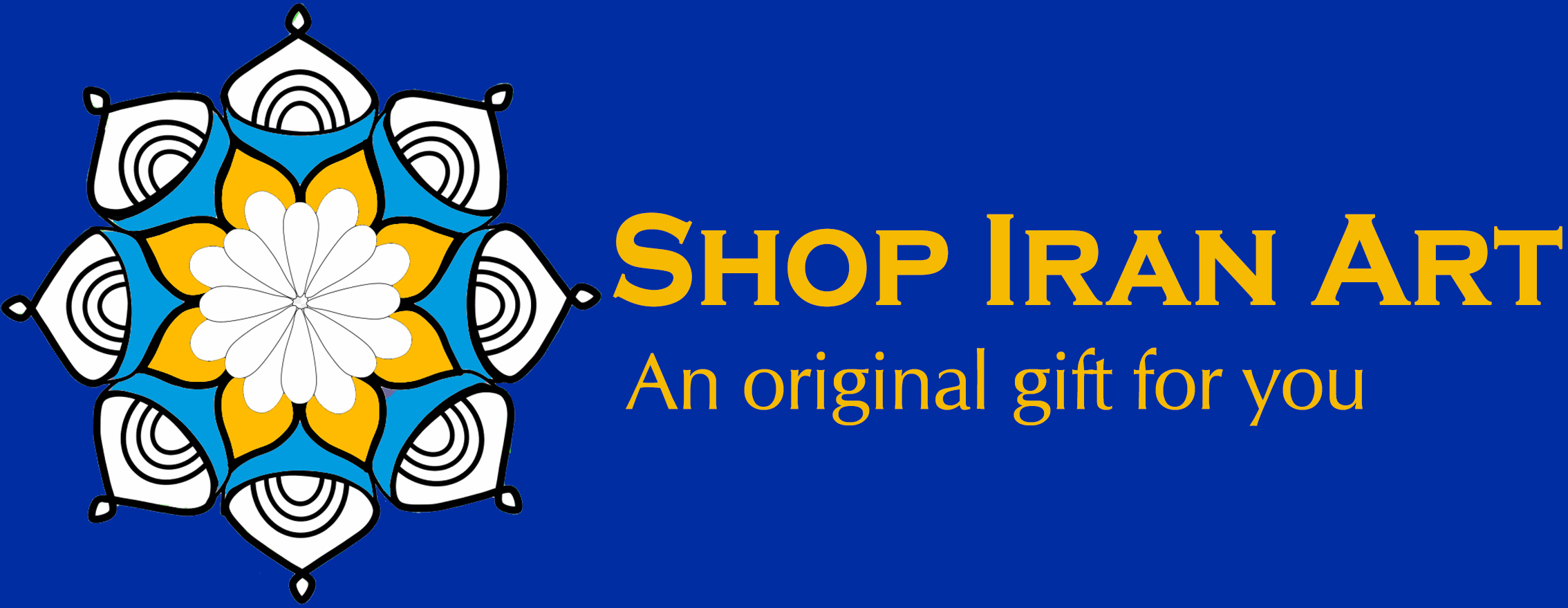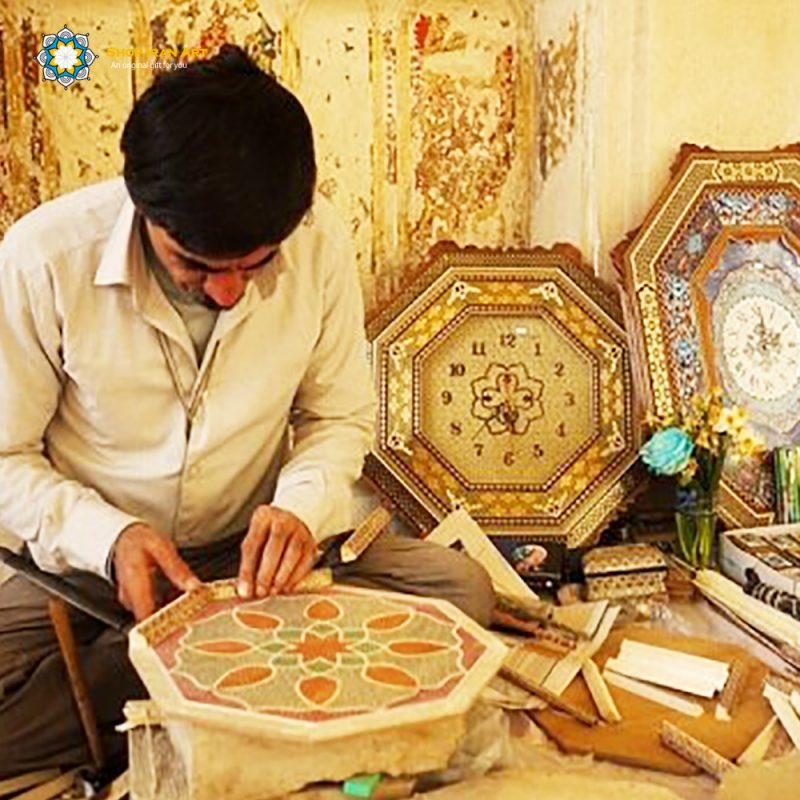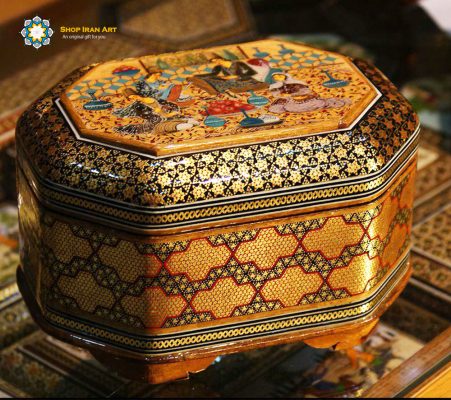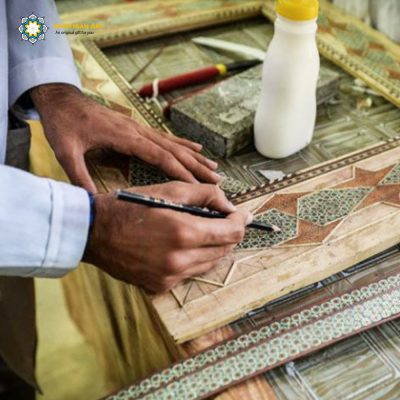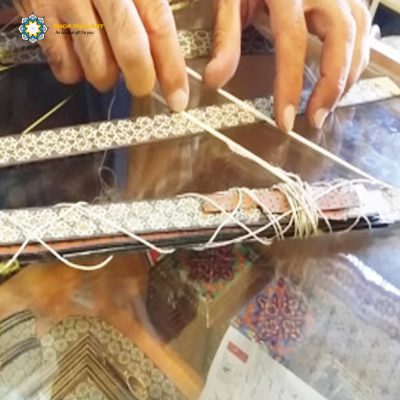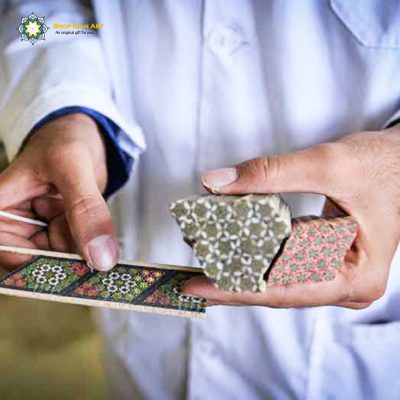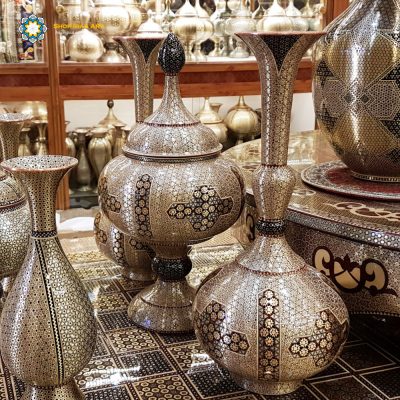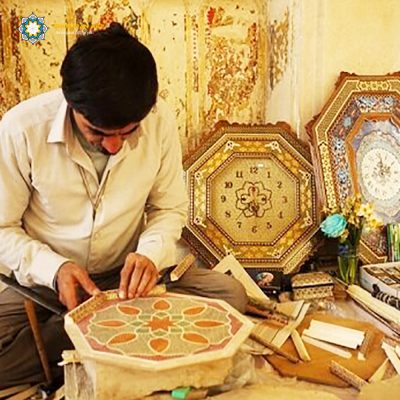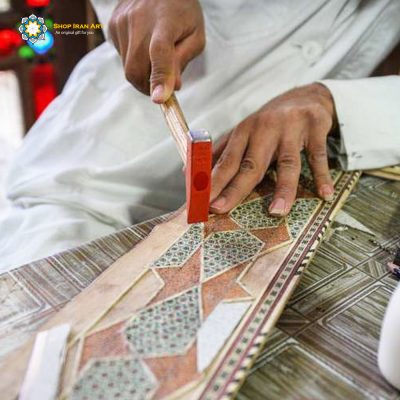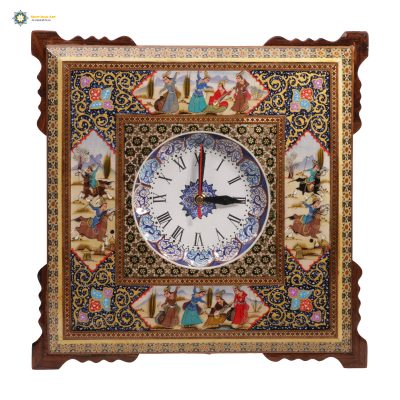Marquetry
How to do Marquetry + 100 different products
How to do Marquetry + 100 different products
Introduction
To answer this question” How to do marquetry”, we need to getting know the art of marquetry.
What is known today in Iran as the art of Persian Marquetry or Khatam Kari is a distinct and even evolved type of art that is known in the world as intarsia or inlay. In fact, the word intarsia is a modified form of the word intersia, also known as the inlay.
In authentic Persian cultures, we come across these definitions of Persian Marquetry:
“Putting bone fragments with a pattern on wood.”
“It is an instrument made of ivory and camel bones and other things, and flowers and several images are engraved on it.”
“The art of decorating the surface of objects in the form of a mosaic with small triangles makes small triangles out of wood, metal and bone.”
The late Ali Nemat, one of the greats of Khatam art, says: “Decoration of objects and objects that are done with geometric designs from small pieces of ivory, bone, metal and oysters.”
Professor Mohsen Sani Khatam, the son of the late Haj Mohammad Hossein Sanei Khatam, defines this art from his father’s words: “Khatam means the end of drawing.”
Marquetry in the common way today can be defined as: The art of decorating the wooden surface of functional and decorative objects using raw materials such as wood, bone and metal in the form of geometric shapes or knots is called Persian Marquetry.
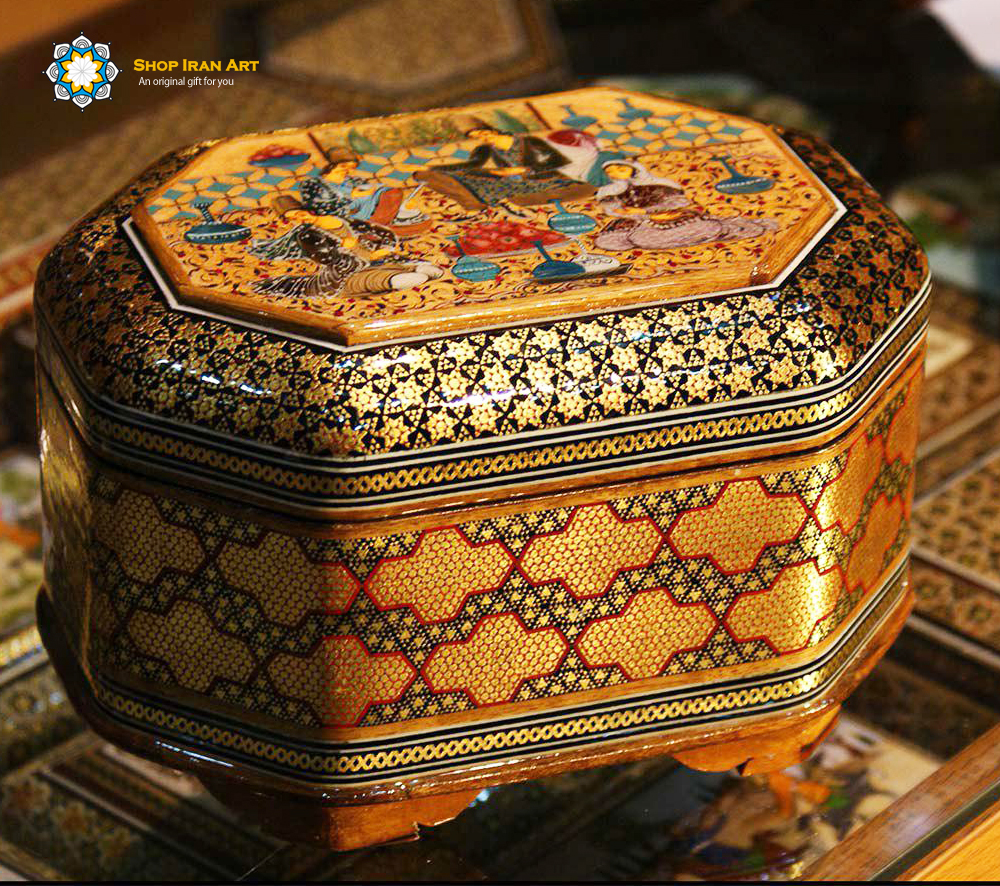
7 Steps on How to do Marquetry
The most important steps that exist in the preparation of the marquetry and the carelessness and negligence in them that cause irreparable damage to the body of this original art are as follows:
1- Prepare a map to show how to put the inlay pieces
2- Preparing the necessary raw materials based on the type of work and the type of design
3- Wrapping the inlay (flowers)
4- Cut the pieces and press them
5- Selection of infrastructure (surface on which the inlay is to be mounted)
6- Gluing inlay cuts on the substructure surface
7- Polishing
In the past, the only unnatural color used by inlay makers was green, which was produced by the rusting method. The use of different colors to make colored triangles has become especially popular since access to raw materials such as betel and jujube became scarce or scarce. These steps will answer you question on How to do marquetry?
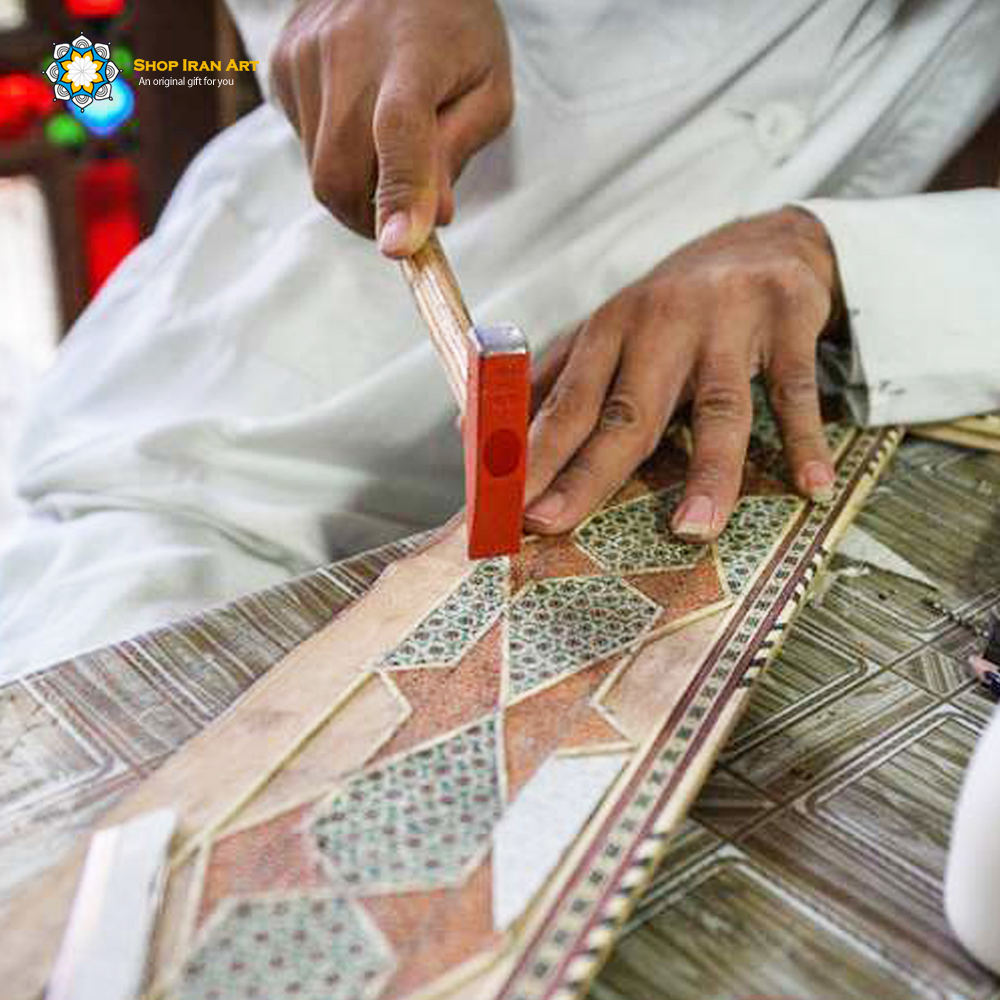
Wrapping the inlay (flowers)
The purpose of wrapping the flowers is to put together all kinds of finishing materials so that the final design or clay is obtained from their community, which is intended and used for work. Flower making, which is actually the most important part of an inlay, depends on its type.
Because the basis of Marquetry designs is geometric shapes and the beauty of these shapes is to observe order in them; Therefore, the most important principle for a good product is to have a geometric order, in other words, maintaining geometric relations in picking parts and the existence of this order in the performance of a unit that is ultimately a function of a precise geometric order, a prerequisite for a lasting and original effect Is; Accordingly, the more rhythmic and different the lines and shapes in marquetry, the greater its artistic value.
The use of liner behind the inlay cuts and high-quality glue (preferably hot cream) is one of the most important features of high-quality inlay. Lining the inlay, while making it more beautiful, helps a lot to strengthen it.
Grids and fields of formation of geometric patterns in the art of inlaying are:
Square grid:
Whenever we divide the sides of a square into equal sizes and then connect the obtained dimensions exactly, square-shaped houses
A smaller one is obtained inside a large square, which is called a square grid. This grid is used to draw patterns such as the “wave and flood” pattern, which are mostly used for borders. If smaller squares are drawn diagonally inside a large square at an angle of 45 degrees to the sides of a large square, that grid is called a diagonal square grid. This network is used to draw designs such as Shamseh, “Pili” and the role of clay.
Application of square grid in Khatam: One of the most important motifs of Khatami that are made using this grid can be mentioned patterns such as zalfak, nightingale eye, case and entrance. The use of these motifs is more seen in the works of Khatam in the Safavid period. ۲.
Lozenge grid:
In this grid, as its name suggests, they use a rhombus instead of a square, and the inside is carefully divided into smaller rhombuses.
Triangle network:
Whenever we change the obtained rhombus network in such a way that each of the rhombuses in the network becomes two triangles, in this case the obtained network is called a triangle network. Triangular network is one of the networks that has many applications in designing marquetry art drawings. The most common inlaid motifs that use a triangular grid are: honeycomb, six and sun, lozenge, Ababil and janaqi.
A circle network:
The circle, which is the most complete geometric shape, can alone be a reliable replacement for the previous three networks. In other words, all the geometric shapes that need to be drawn on the grid. It can be drawn with this geometric shape; Therefore, the circle can be considered as the mother sub-pattern or network for all patterns and geometric sub-patterns. The sub-pattern or circular grid is a suitable grid for drawing special nodes such as eight and four node nodes, solar and node node nodes, eight zamzam nodes, headbands and crosses. For circle desgin.
in order to see all products of Shop iran art website for persian marquetry, Please click the following link:
+100 Products of Persian Marquetry
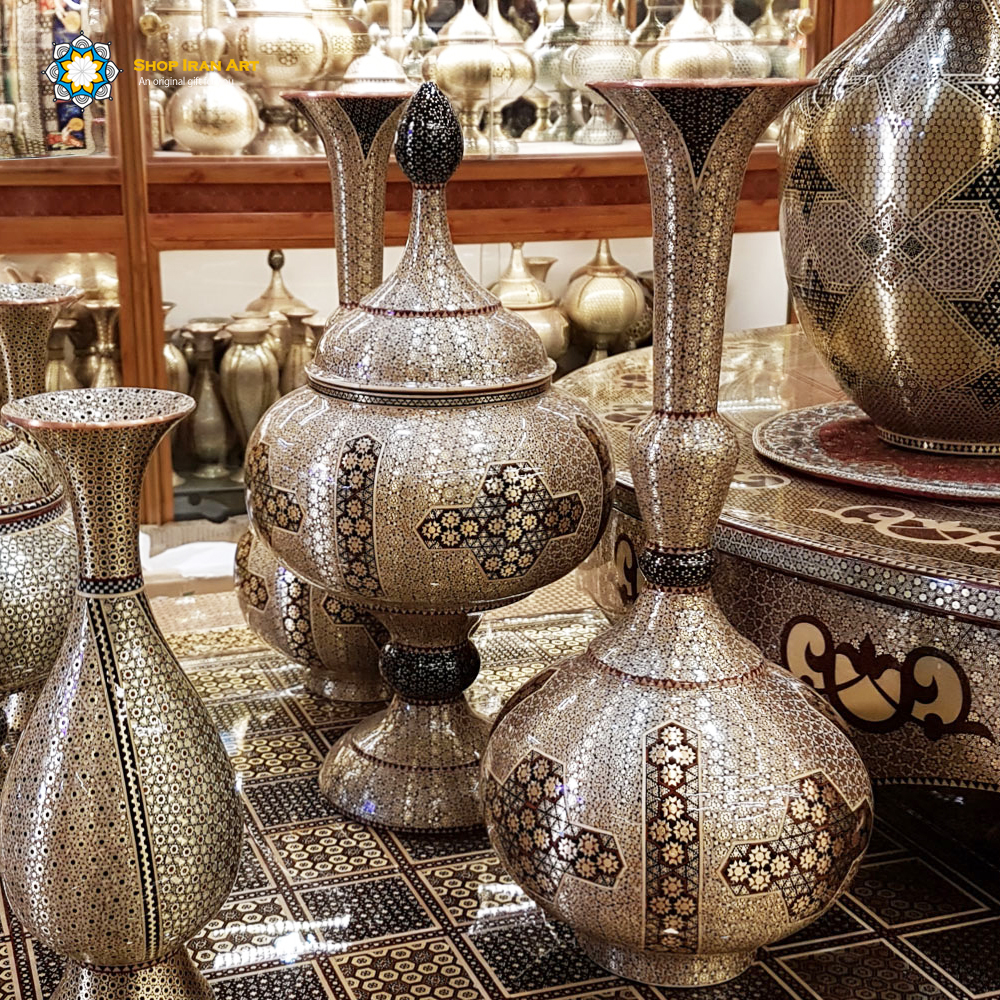
Common Desgin
In general, the motifs and designs used in the inlay can be divided into two separate groups.
The most important examples of marquetry are:
1- Simple non-floral inlay: This is a simple and inefficient example of inlay and the colors used in it are mostly black and white.
2- Cloud inlay: It is a type of hexagonal inlay whose flower unit is different hexagons and 20 hexagons and 50 blades are used to prepare a stem.
3- Hexagonal inlay with the word Qomi or the globe of the golden world: This type of inlay is of the hexagonal type, which is made of 22 wires and its blades are composed of nine triangles instead of four triangles.
4- Parhavaro Inlay: This inlay is similar to the inlay of the golden world, which is usually made of 22 wires and has 39 triangles in its necks.
5- Inlay knot: In addition to the examples mentioned, sometimes the inlay itself is used as a knot, that is, the components of the inlay are different parts of a knot instead of a triangle.
The most important centers of Marquetry in Iran in the past were the cities that were the center of the caliphate and government; Among these, the cities of Shiraz, Isfahan and Tehran have received more inlay artists than other cities. The cities of Shiraz and Isfahan have gained a lasting reputation in terms of the number of workshops and artists, as well as the elegance and beauty of works of art in the construction of Persian marquetry.
Hope this article learn you about “How to do marquetry”
There are some other type of Persian art: We recommond to visit the following links for more and more.

